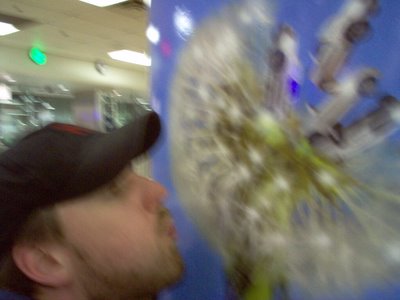Prado and Google bring masterpieces to Web
MADRID: Google and the Prado Museum here are making it possible for Web-surfing art lovers to study 14 of the museum's greatest works in minute detail without ever setting foot in Spain.
The project allows users of Google Earth to zoom in on high-resolution images of the works, scouring the canvas for details that would barely be visible to a museum visitor standing behind a velvet cordon.
Other major art museums, like the National Gallery in London, have made their collections available online, but the Prado is the first to produce such high-resolution reproductions on the Internet, Javier Rodríguez Zapatero, director of Google Spain, said.
The 14 works include Diego Velázquez's "Las Meninas," Hieronymus Bosch's tryptich, "The Garden of Earthly Delights" and Peter Paul Rubens's "The Three Graces."
Google Earth is a free geographical tool that uses satellite technology to produce maps, a virtual image of the earth and detailed views of everything from houses and famous buildings to corn fields.
Whether it is a tiny wasp resting on a white petal above the heads of Rubens's goddesses or faint stains of paint used to retouch "Las Meninas," the Prado project offers a privileged view of the works that is not available to the public, Google and museum officials said.
"What this project offers is a level of definition that normally only we, the staff of the museum, see," said Miguel Zuzaga, director of the Prado.
Rodríguez said Google took hundreds of photographs of the 14 paintings and patched them together; the reproduction of "The Garden of Earthly Delights" required 1,600 photos. The resolution of the reproductions was 1,400 times higher than would be achieved with the use of a 10 megapixel digital camera, he said.
"The fact you can view 14 great works of art from any point on the globe is another expression of our mission to democractize information," he said.
Zuzaga said that the online sample could be the beginning of a global art museum. "It's like, Google Earth: Google Art," he said. "This could do on the Internet what Gombrich did with his book, 'The Story of Art,"' he continued, referring to Ernst Gombrich's 1950 book, which is credited with making fine art accessible to millions of readers.
Zuzaga said the Prado feature on Google Earth was not a substitute for visiting the museum, but a complement that could enhance a visitor's appreciation.
In a presentation at the Prado on Tuesday, he pointed to a minute detail of Rogier van der Weyden's 1435 painting "The Descent from the Cross": the eye of St. John the Evangelist, swimming with glistening tears, is painted with a realism that is almost photographic.
Zuzaga, however, said nothing could replace the act of standing before a painting, or seeing it hung as part of a collection. "What we have here is a scientific level of detail," he said. "What we can access here is the body of the painting. But we cannot access its soul."
Rodríguez said that Google had paid for the project, which took six months to complete, but declined to say how much it had cost.
Those who want to gain access the Prado works online have to download Google Earth and search for the Prado Museum. Once the image zooms in on the museum, they should click on a white square that leads to thumbnails of the 14 paintings.

No comments:
Post a Comment